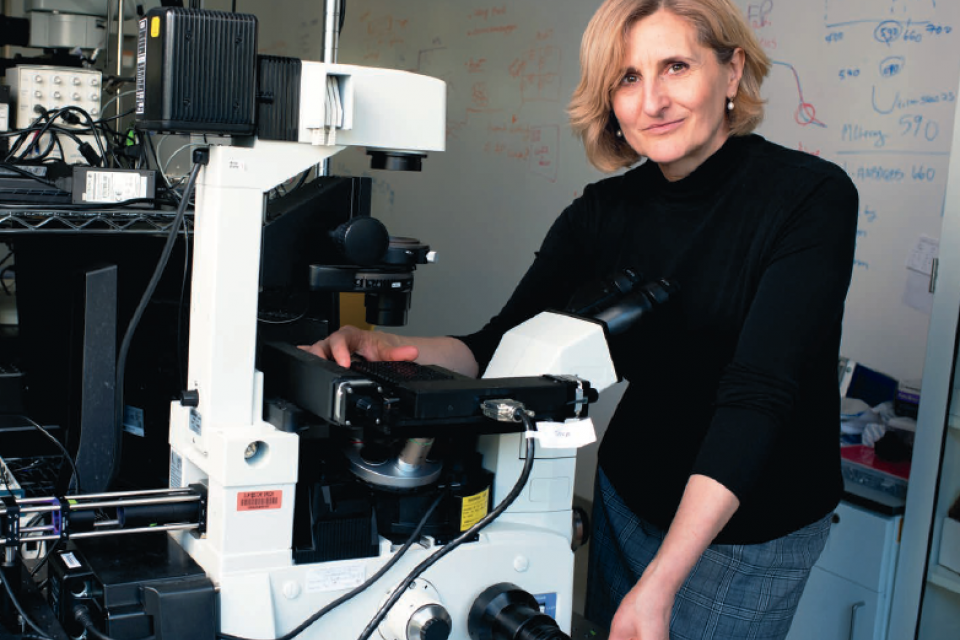
Dr. Emilia Entcheva
Anti-cancer drugs can offer hope of an effective treatment for millions of cancer patients, but they also can carry the risk of side effects, particularly cardiac side effects. Testing for these side effects is essential, but it is a lengthy and expensive process, and pharmaceutical companies are eager to find ways to speed it up and reduce costs.
This is where the pioneering work that Dr. Emilia Entcheva is doing may prove very helpful. Dr. Entcheva’s lab studies problems related to electrical activity in the heart, and she is developing a technique to expedite researchers’ ability to observe electrical activity across cardiac cells, including activity that can cause arrhythmias (abnormal heart rhythms), which can be lethal. She has taken a unique approach to it, borrowing an opto-genetic technique that is used more commonly in neuroscience.
Unlike traditional electrical methods of sensing and stimulating cell activity, optical methods allow researchers to study the activity over millions of cells simultaneously, thereby speeding up their observations and understanding. But heart cells are not light-sensitive, so researchers must first find a way to make them sense and respond to light. By genetically manipulating the cells with light-sensitive proteins from algae, they can make the cells respond to light.
“In neuroscience, this technique has exploded and enhanced our ability to understand brain circuitry,” claims Dr. Entcheva. “These opto-genetic methods allow one to very selectively manipulate only certain types of neurons to understand their function. So our lab has extended this to cardiac research.”
Since people can react differently to the same drug, Dr. Entcheva’s lab also is developing technology to facilitate personalized testing—or what she calls “my-heart-in-a-dish” testing platforms. Skin or blood cells are taken from the patient, transformed into adult stem cells, and then differentiated into cardiac cells.
“Using our optical means, we can characterize these newly developed cardiac cells in a way that wasn’t possible before,” Dr. Entcheva explains. “We can make new heart cells from the person’s own blood, study them to see how they would react to a new drug, and test to see which therapy would work best for them.”
Her team has had a number of successes in their research, including two recent studies. One study with Dr. Gil Bub of McGill University showed that they could use light to steer electrical waves in the heart in a way that no one had shown before. Used with the right applications, it could be a very powerful way to control arrhythmias. The other study, which her student Aleks Klimas spearheaded, demonstrated the power of their opto-genetics approach to drug testing, and it has sparked interest in the pharmaceutical industry.

